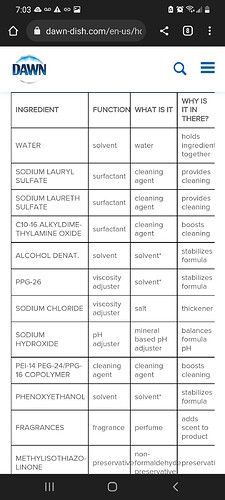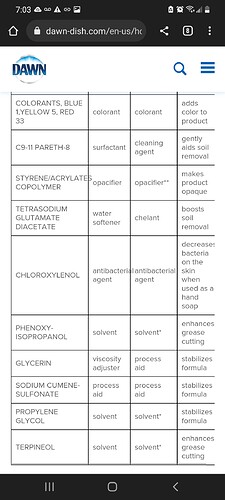Hello everyone, I want to share the findings of Rami Rodriguez and myself regarding impurities in the butane supply. I was connected to Rami via @GasLogix-Adam . Based off of a collaboration of information Rami devised an experiment. The results of the experiment yielded much useful information in determining the specific compound(s) responsible for the “fast crash” phenomenon as well as “Medusa diamonds”. The characteristics of this defect provided the target compounds capable of interrupting the typical crystalline structure and causing an amorphous arrangement, rapid THCa precipitation and diamonds that would chalk after seperation. The simple cubic orientation becomes distorted with elongated face-centered structure which points directly to atom size while also having characteristics in regards to polarity and electronegativity which would allow interaction.
Therefore the test vessel was composed of layered adsorbent material designed to interact with a number of different families of compounds. The amine interaction was nearly negligible however the oxygenate interaction was clear. The entrained normal butane residue within the vessel was obtained and analyzed which provided clearer insight into exactly which oxygenate functional group was responsible for the disruption. Using mass spectrometry the identifying compound belonged to the family of alcohols, specifically it is methanol.
This discovery also confirmed the hypothesis of the contaminant being introduced at the early stages of LPG production. Alcohols are commonly added to well-head gas to prevent hydrate formation upon transferring via pipeline. Most fractionation plants are equipped to remove this addition by passing the product through an amine scrubbing unit utilizing primarily Diethanolamine. Hydrate inhibitors most used in the gas industry are either methanol, or one of the glycols (especially monoethylene glycol). Unfortunately this solution to the transportation issues comes at a cost and is very regularly added in excessive amounts typically going unnoticed otherwise, harsh fines and penalties are forced upon the producer.
Given this data I have been able to replicate the results of the fast crash as well as Medusa diamonds in C5 (pentane) which has never been reported to have the issue. Furthermore methanol has been identified in hydrocarbon extract at low levels produced by multiple labs in California all with different gas sources. Unfortunately the LOD and LOQ are low enough to where this has been missed by labs across the state.
I would like to thank @GasLogix-Adam for making the connection and especially thank Rami for his vital role in figuring this out and allowing me to share the findings with you all.
162 Likes
You’re the shit. Good fuckin work
35 Likes
You’re doing gods work, my friend.
Edit: Actually, I’m curious. Was this never detected in RST before? And if so, is that because the concentration is too low to detect (I.e. PPB rather than PPM)?
6 Likes
But it’s soap n water bro
Too soon?
16 Likes
@Dukejohnson
-
When using mass spectrometry, what were the limits of detection and quantification? Considering this is being missed by other labs. We have not seen methanol in our extracts but I’ll double check for any <LOQ. Residual ethanol sometimes pops from an incomplete drying procedure after cleaning.
-
When you say the “amine interaction was nearly negligible however the oxygenate interaction was clear,” this is interaction with the adsorbent? And interaction was confirmed by analyzing the adsorbent with MS?
-
The methanol that was analyzed was still contained in the butane after passing through an adsorbent column? Or was the methanol found in an adsorbent?
-
Are we allowed to see the raw data? What are all of the compounds that were identified?
-
If trying to re-create the fast crash issue in pentane, is there any reason ethanol or other alcohols wouldn’t cause the same to happen? Are most other alkanes interchangeable (heptane, hexane, etc)? What are the minimum and maximum methanol concentrations needed in order to re-create the experiment and what determines a “fast-crash” vs a “normal crash” in pentane? What are the parameters?
Nice work though, and I’m excited to see any supporting data! So water washing is still our best bet?
I’ll definitely be recreating the experiment and reporting results. I currently have ethanol + heptane mixtures crystallizing. Pure ethanol creates bar shapes and needle structures. 50/50 ethanol/heptane is more pyramid and diamond-shaped. Pure heptane looks like the usual THCa crystallized in (clean) alkane.
31 Likes
I’ll have to go double check all my COAs for methanol now.
Thank you everyone for all your hard work on this!
5 Likes
Thank you for diving down the rabbit hole and thank you for sharing! 
7 Likes
Thank you for this write up!!
We haven’t popped for methanol but the loq is a joke in oregon so it’s likely they aren’t looking hard enough.
Would definitely love to know more details as @hambread said and i think we need to spend a little more time on our GC and start comparing our methanol standards to the various different medusa samples we have around.
10 Likes
-
I’ll check and edit this post
-
Yes and yes
-
The methanol was in the absorbent
-
Not yet, I wouldn’t claim ownership of that data and is not mine too release, I would say likely about 2 weeks and he will feel comfortable releasing the data. Until then an explination of said data will have to do.
-
This was my experiment not Ramis hence the less scientific approach, for me it was completely based off of observation and comparing it to my normal experience with pentane. The fast crash I define by me losing control of THCa precipitation. In pentane I normally have complete control so when I add an ingredient and minutes later all my thca comes snowing out of solution uncontrolled that gets my attention.
I was unable to replicate Medusa crystals using any other alcohol. No idea why
28 Likes
I am extremely excited to see if you get some matches. I suspect you will!
13 Likes
I just looked at our results. Seems like our testing lab… is more sensitive for ethanol than methanol?
No methanol that I am seeing, but I am not surprised with the LOD/LOQ where it is.
1 Like
So what are the values associated? Belcosta reports (LOD / LOQ) for methanol at (13.06527 / 58.27506 ug/g) which is close to the values they report for ethanol.
2 Likes
Very interested in trying this out. I know I have done butane to methanol back to butane LLE before but I may have not noticed anything like fast crashing as my trim was super aged. I have also recently stumbled across my pentane/ methanol/ pentane LLE jars from a few years ago and the pentane terps have some nice diamonds at the bottom
4 Likes
THANK YOU for this, @Dukejohnson, your collaborator, Rami, and @GasLogix-Adam for connecting them! As in all scientific endeavor, any answers will lead us to more questions, so I wish to validate the poignancy of @hambread’s questions and reiterate some of them, along with my own! I am trying to keep my ravenous curiosity in check, so please don’t take anything I ask as accusation or judgement in any way! I simply must KNOW the things! 
-
What instruments were used for analysis? What are the limits of detection and quantification of those instruments?
-
As Hambread requested, may we please see the raw data? What all impurity compounds were identified, and in what quantities? (I know the analytes were arbitrarily concentrated and variably adsorbed, but the data is still useful!)
-
What impurity compounds (if any) were found directly in the freshly purchased butane you sampled… or were they all found in headspace vapors over butane-saturated adsorbents?
-
Were the butane AND adsorbents all freshly purchased? Were the adsorbents analyzed (headspace gases, for example) BEFORE your butane was introduced?
-
I assume, but I will ask anyway: Were the methanol, wtfamines?, and other impurities loaded onto your adsorbent by passing freshly purchased butane over them? Was that butane in liquid or gas phase as it was introduced to the adsorbent? Am I correct to assume the gas-phase headspace vapor of butane was the analyte/carrier mixture you analyzed?
-
I feel like some context is missing when you jumped directly to “amine interaction was nearly negligible however the oxygenate interaction was clear." Your wording indicates adsorbent/adsorbate ‘interactions’, but the topic is THCa interactions. Can you please tell my obnoxiously literal mind specifically WHICH interactions are being described here?
-
What are the parameters, procedures, results and conclusions of your study?
I wait with bated breath on the edge of my seat in anticipation of knowing more than just the “abstract & discussion” you’ve written here, @Dukejohnson! Thank you all again, as well for your drive and diligence in the doing of the things! 
35 Likes

